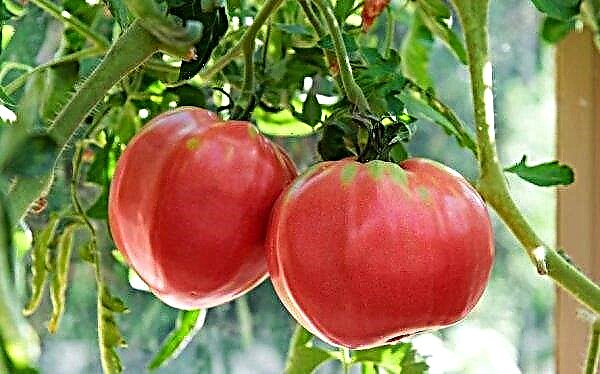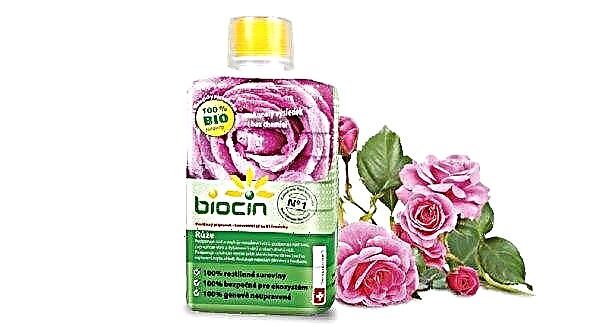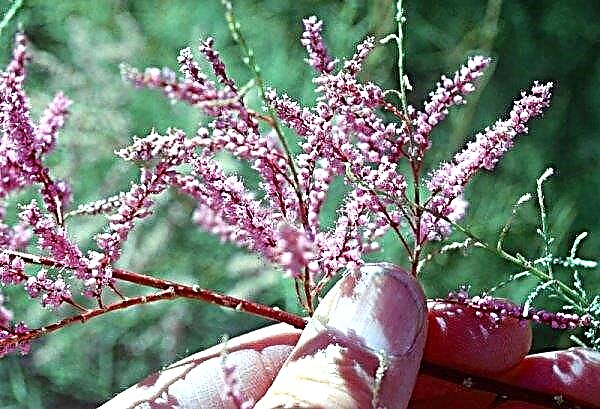Violets, or Saintpaulias, are one of the most unpretentious house plants after cacti. Thanks to the long work of the breeders, on the basis of the standard variety with blue flowers, a lot of different species with interesting colors were obtained, one of which is Pink Watercolor. This grade will be discussed in today's material.
Characteristics and description of the plant
The author of the Pink Watercolor variety is Konstantin Morev. This man has been breeding violets since 1994 and has already bred many different varieties that differ in their unusual appearance and quality, sometimes even exceeding modern American varietal specimens. Much attention in his work is paid to clearly expressed strokes in shades of violet petals.
Did you know? The ancient Greeks decorated the deathbed with flowers of violets and the graves of the dead young girls and guys. The same flowers were used on the day of the spring holiday held for all children of three years of age.
The bushes of these flowers are small, up to 15 cm in height. The leaves are dense, green, on thick petioles. Streaks are clearly visible from the inside of the leaf plates. The outer side of the sheet is darker in color, covered with a layer of soft transparent hairs.
The variety got its name due to the unusual coloring of white petals, on which strokes are clearly visible, as if specially left with a brush with watercolor paint. The flowers are large, up to 6 cm in diameter. The core and the border are white only if the temperature is maintained within + 20 ° C, but when increased to + 25 ° C and above, the flowers become completely pink.
Flowering is long and when optimal conditions are created, it is 10 months a year with a break of 1-2 months. It begins to bloom for the first time in June and ends in September-October, the second time blooming begins in winter, in December, and ends in March-April. The second flowering may not occur if the room temperature is too low.
The conditions for growing violets at home
For the full development of the senpolia, certain conditions are needed that will be as close as possible to the natural ones.
Of particular importance are:
- lighting quality;
- temperature;
- humidity.
Placement and lighting
Violets need a lot of diffused light and high-quality shading from direct sunlight. Incorrect light conditions degrade the quality of flowering, and can even provoke its absence. The optimal distance to the light source should be 30–40 cm. Violets need a long daylight hours of 10–12 hours.
The best option is a wide windowsill on the east or west side. It is important to ensure that the plants do not come in contact with glass, because they can not stand the cold and overheating. If there is no such place in the house, you can arrange the plants on special racks in any part of the apartment, providing them with lighting from the phytolamp. The distance from the outlet to the phytolamp should be within 20-30 cm.Important! Violets can be freely placed on wide window sills, even on the sunny side, if tall cacti and palm trees stand closer to the glass. Tall plants will create enough shadow from direct sunlight, and you will be able to organize a beautiful exotic corner right in the apartment.
Temperature and humidity
The optimum temperature for year-round cultivation of senpolia is +18 ... + 20 ° С. With this mode, you can achieve long double flowering. In the summer months, violets feel good at a temperature of + 28 ° C, but bloom less profusely. In winter, a short-term decrease in night temperatures to + 12 ° C is permissible, but no more than 2-3 days in a row. Otherwise, plants may die from freezing.
Humidity should be 50–75%. If necessary, the space around the plant can be moistened with a spray gun, but this must be done with great care. A good option is to place violets in close proximity to plants that actively evaporate moisture: this will create a natural symbiosis, as in natural conditions.

Features of home care
Violets are quite demanding care. The slightest mistake can lead to rotting of roots, greenery and other diseases of a similar nature.
Watering
You can water the Saintpaulia in one of 3 ways:
- through the top, introducing moisture not under the root, but along the edge of the pot using a watering can with a long nose or a large syringe - water is poured into the pot until it seeps through the bottom of the pot and flows into a pan, which is then drained;
- through the pallet - water is poured into the pan for 15–20 minutes, then residual moisture must be removed;
- using a wick - a wick of synthetic fabric up to 2 cm thick is threaded into the bottom of the pot, directly into the drainage holes, and a water tray is placed under the pot, into which the wick is lowered (the volume of the stand should be less than the volume of the bottom of the pot so that it does not come into contact with water) .
Water for irrigation should be at room temperature, clean, settled. Young violets need to be moistened constantly. Wick watering is perfect for this. It is enough to pour water into the pan once every 2 weeks. Adult plants require less watering. It is optimal to moisturize after the top layer of the earth dries to a depth of 0.5–1 cm. For adult plants, it is better to alternate the application of water through the top and into the pallet.Did you know? Violet is one of the most useful plants for the home. It does not cause allergies, looks great, and also releases phytoncides into the air, which contribute to improving well-being and increase immunity.
Periodically, the leaves need to be cleaned from dust. This is best done with a damp cotton swab.
Top dressing
Senpolia is characterized by a long flowering period, respectively, they consume a lot of nutrients and need year-round feeding. For this purpose, you can use fertilizers specifically designed for violets or ornamental plants. Fertilizers are applied every 10-14 days in the appropriate dosage indicated on the label. When applying fertilizers intended for ornamental plants, the dosage should be reduced by half from that specified by the manufacturer.
Video: Feeding violets
At different stages of plant development, the composition of fertilizers should have a different concentration of mineral content:
- young plants are actively increasing their green mass, so more nitrogen should be part of the fertilizer;
- during flowering and budding, plants need a lot of phosphorus and potassium, and nitrogen should be kept in minimal quantities.
- within 30 days after transplantation;
- at too high or low temperatures;
- in the presence of lesions by pests and diseases.
- root
- foliar.
The ideal option is to alternate these 2 methods. Fertilizer “Mr. color. Saintpaulia "(used for flowering - 1 cap / 2 l of water) and" Mr. color. Wagon "(used to build green mass, roots and in between flowering - 1 cap / 3 l of water). Root top dressing is best done by pouring liquid into the pan. All actions are similar to lower watering. For root top dressing, the concentration of the solution should be less than half than for root.Did you know? The largest violet flowers grow on soils rich in zinc. Thanks to this feature, it was possible to discover the largest zinc deposit in Europe.
Spraying on the sheet is carried out in cloudy weather or in the evening. Leaves should be clean. After 1 hour after processing, you need to make sure that there is no moisture on the leaves and in the socket. If the liquid still remains somewhere, it must be removed with a swab or sponge.
Pruning
When growing Saintpaulia, pruning is more of a sanitary nature and is carried out if the lower leaves:
- started to dry out;
- yellowed
- greatly extended and spoil the appearance of the bush.
Manipulations are carried out manually with gloves, after dipping your fingers in wood ash or activated charcoal (powdered). Healthy leaves can be used for propagation. If there are too many new stepsons, they can be cut using small scissors pre-treated with alcohol, or simply pulled out of the soil. When pulling out stepsons, the soil should be moist so that the main outlet is not damaged.
If there are too many new stepsons, they can be cut using small scissors pre-treated with alcohol, or simply pulled out of the soil. When pulling out stepsons, the soil should be moist so that the main outlet is not damaged.
Transfer
The senpolia should be transplanted in between flowering. The ideal time is April-May. It is better to take a pot plastic - it is more mobile and retains moisture longer. The new pot should be 1 cm larger in diameter and height than the previous one, but three times smaller in diameter than the plant itself. The pot must have a sufficient number of drainage holes of a rather large size (0.5–1 cm). The transplant is carried out annually, because the plants bloom profusely and quickly deplete the soil.
When transplanting, the earthen lump is replaced partially, if it is a planned procedure, and completely, if there is a strong exposure of the stem in case of diseases or damage by pests.Important! Violet is not afraid of over-rooting. If during the transplantation to remove part of the dried roots, the plant will develop even better.
The soil for violets can be bought in a store or made independently by mixing:
- 4 parts of sod-leaf land;
- 1 part coarse sand;
- 1 part peat.
To enrich the soil with nutrients, 20% of the total soil volume of sphagnum moss and wood ash are added to this composition. Before use, moss-sphagnum is poured with boiling water for 15 minutes, and then dried and ground. To disinfect the soil, it is shed with a weak solution of manganese and mixed thoroughly.
Transplantation sequence:
- Spend watering 24 hours before transplanting - the soil should be moist, but not stick to your hands.
- Disinfect the pot by treating it with boric acid.
- At the bottom of the pot lay a layer of expanded clay mixed with perlite and sphagnum moss.
- Lay a layer of soil about 1 cm above the drainage.
- Carefully remove the plant from the old pot, shake off the soil, which is easily separated.
- Place the plant in a new pot and sprinkle the voids with soil, leveling the plant so that after transplanting the lower leaves are almost in contact with the soil.
- Do not water after transplanting; it is better to cover the plant with polyethylene for a day to preserve moisture and help it adapt to new conditions.
How to propagate at home
Senpolia is propagated at home in 2 ways:
- cuttings;
- dividing the bush.
Cuttings
Cuttings are leaves of Saintpaulia. Bottom healthy leaves removed during pruning are suitable for propagation. After trimming, having selected the most attractive specimens, they are installed in a glass of water, after adding 1 drop of hydrogen peroxide and a tablet of activated carbon to it.
Video: Violet leaf propagation
Water is periodically changed and awaiting the appearance of roots. Once they are formed, you can plant in the ground. Prepare it as for adult plants. Pots are taken small, with a diameter and height of 5 cm.
Dividing the bush
By dividing the bush, violets are propagated during transplantation, if the plant gave lateral children - small bushes in several leaves growing from the soil. After removal from the soil, the bush is carefully divided by hand, usually this is not difficult.
If the roots are very woven, you can use scissors treated with alcohol. Young plants are planted in small containers of suitable volume. They cover the pots with polyethylene for a day to create a greenhouse effect.
Plant diseases and pests
The main problem that flower growers encounter when breeding violets is the lack of flowering.
The problem can be triggered by:
- improper care, which is quite easily fixed;
- diseases of various etiologies;
- pests.
The main diseases of senpolia:
- Rot of roots and foliage - the leaves lose their turgor, the rosette changes color, the petioles and leaves begin to fade, becoming watery. The solution to the problem should be quick, with the removal of all damaged parts and the rooting of the remaining healthy part. To prevent the re-development of rot, before rooting, the plants are treated with ash with “Fundazole” (1: 1 ratio) - they are irrigated or dusted with a dry mixture. The same composition is used for prophylactic purposes during transplantation.
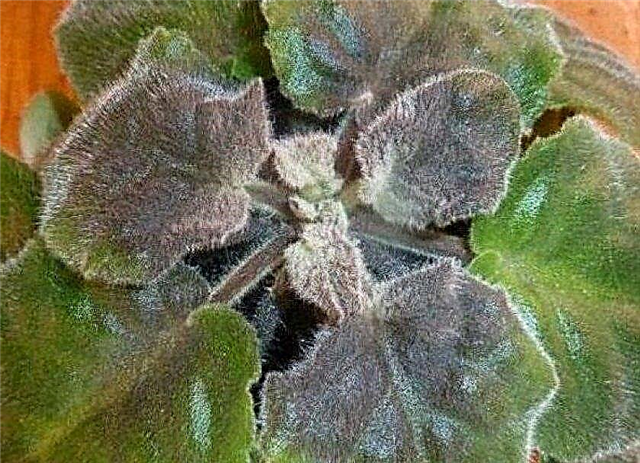
- Powdery mildew - caused by fungal spores, progressing with high humidity and weakened plants. It is eliminated by the complete removal of damaged parts and the treatment with Fundazol according to the instructions.

- Fusarium - Another fungal disease. There is no effective treatment for it, therefore it is better to immediately destroy such a specimen together with the soil, and treat the remaining plants next to it with Fundazol mixed with wood ash (1: 1 ratio).

- Late blight - manifested by brown drying spots and loss of turgor. Healthy parts of the plant should be urgently separated and attempted to root, and the affected parts of the plant should be disposed of with the soil. All nearby specimens need urgent treatment, as in Fusarium.
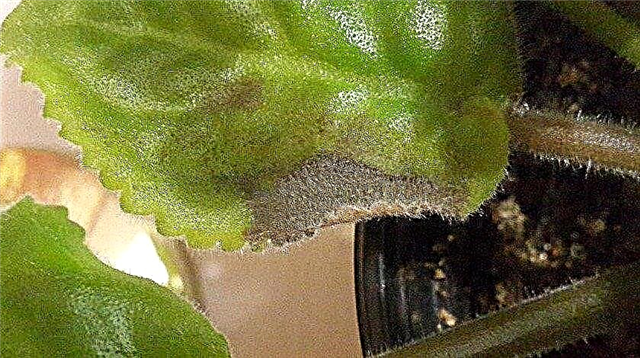
- Viral diseases - are not subject to treatment. Plants are completely destroyed along with the soil.

Pests of violets:
- Cyclamen tick - diseased plants are pre-isolated, the affected parts are removed and treated with wood ash sections. They are also treated with Fitoverm according to the instructions 2-3 times.

- Aphid - eliminated with a solution of tobacco dust. The liquid is sprayed on the sheet and used instead of water for top watering.
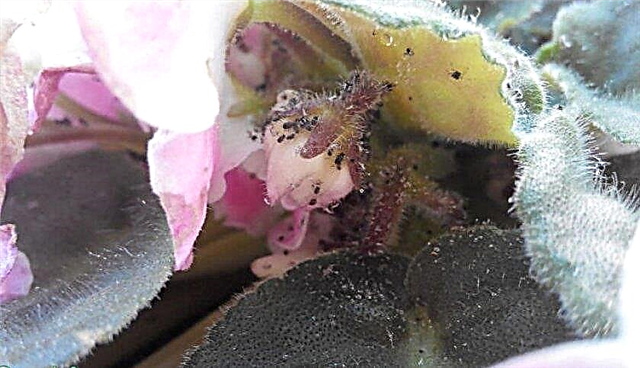
- Thrips - they are eliminated with the help of liquid “Aktara” (1-2 drops of substance are added to 3 liters of water), they process the leaves, peduncles and soil.
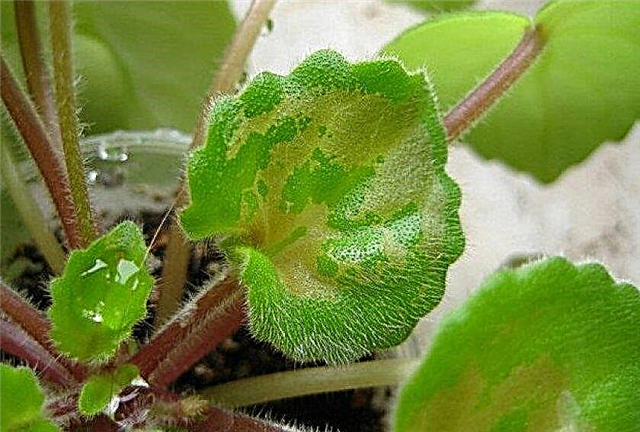
- Mealybug - eliminated in the same way as aphids.

- Sciarides - are eliminated with the help of "Actara", the proportions are the same as for thrips.
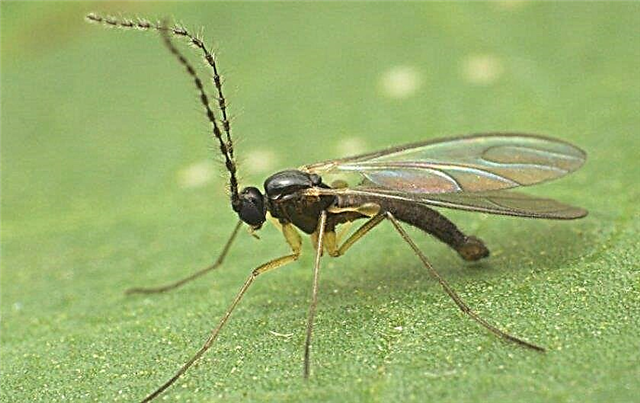
Prevention of diseases and pests:
- precise control of soil moisture and temperature conditions;
- timely application of fertilizers according to the age characteristics of plants;
- preventive tillage with a mixture of ash and Fundazol 1-2 times a year.
Important! When buying new violets within a month, they definitely need to organize a quarantine zone in which there will be no other plants already available at home.
Violet variety Pink Watercolor is attractive for its unusual colors. To achieve flowering from it up to 10 months of the year, it is necessary to comply with all the above rules.















